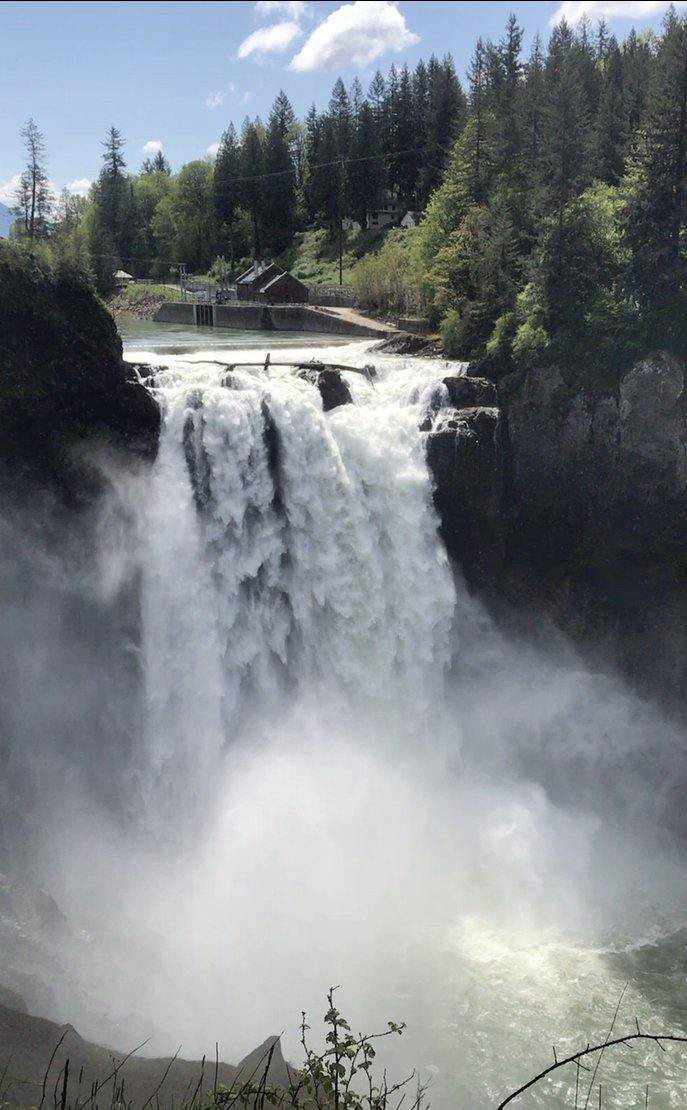Not every waterfall topples in the same way. We can take cues from nature to design amazing waterfall looks but, remember that Play It Koi offers a wide selection of pre-made waterfalls, which can streamline your custom efforts.
Waterfall Anatomy: The top of the waterfall is known as the crest (brink). The edge the water spills over is called the weir and the width of the crest and weir is called the crest line. The steep or vertical surface of a waterfall found under the crest is called the (rock) face. If the weir protrudes out from the face (or the face is undercut) leaving an air space behind the falling water, is called an overhang. The bottom of the waterfall is the base (foot); while the base line is the width at the bottom of the falls. This may contain many rocks at or above water (talus) or be a deep empty void (plunge pool). On steep faces, the distance the water flows from crest to the base is called the run out. If the water separates free of the face in a single unbroken vertical fall, this distance is called the drop (or leap). A break is a horizontal interruption in the drop. If a waterfall breaks in a series of evenly spaced drops (like stair steps) it is known as washboarding.
Waterfall Shapes: Here are specific waterfall “types” (again, these are generalized as different types of waterfalls are very nuanced) and you may find many differing or alternative terms. No matter what they are called, look at photos, nature and actual waterfalls and design your waterfall to the one you like. Here are a few types:
- Classical: The crest line (width) of the falls is roughly equal to the drop (height) – square shape
- Block: The crest line (width) of the falls is least ~1½ times wider than it is tall (drop) – horizontal rectangle shape
- Curtain: The crest line (width) of the falls is at least ~1½ times narrower than it is tall (drop) – vertical rectangle shape
- Fan (A-shaped): The crest line (width) is a third or less of its base width descending over its face (upright triangle shape)
- Funnel: The base is ) is a third or less than its crest line (width) descending over its face (inverted triangle shape)
- Ribbon (Curtain Modification): A very narrow ephemeral waterfall that is falling down the face (not falling free)
- Plunge (Curtain modification): A waterfall that drops vertically near but without touching the face (falling free)
- Punchbowl (Curtain modification): A waterfall that shoots out of a narrow crest line falling far away from the face
- Horsetail (Fan modification): A very narrow and tall Fan-A shape that is mostly falling free from face (horsetail-shape!)
- Sluice (Funnel modification): A very tall and wide waterfall that is mostly running down the face narrowing at the bottom
- Bowed (Convex): (Weir modification): A waterfall where the crest line is curved outward in a downstream fashion
- Horseshoe (Concave): (Weir modification): A waterfall where the crest line is curved inward in an upstream fashion
- Segmented (Twin): (Weir mod): A waterfall made up of two or more distinct parallel drops due to a weir obstruction
- Terraced (multiple): A waterfall made up of two or more distinct drops connected together with continuous white water
- Tiered or Stepped (multiple): A waterfall made up of two or more distinct drops separated by calm water in succession
- Complex: (multiple): A waterfall made up of various types of waterfalls, breaks, overhangs and even streams altogether
- Cataract: A waterfall with large volumes and fastest flow rates of water chaotically plunging over into a thunderous roar (see picture with this article - this is Snoqualmie Falls during the summer snow melt!). These are usually not achievable in a backyard pond - but oh so worth mentioning!
Weir Design: On all falls, especially sheer falls, the weir can give your waterfall a specific look. By having a very level, sharp, wide and straight weir, the water will be prevented from mixing air and fall like a clear sheet that you can see through. The weir can be curved inward or outward to change the shape of the water into a curtain or rounded shape. A weir might have points which cause mixing, twisting or other different falling motions. You can have different shaped opening in the weir such as a triangle, half circle, square, etc., all having a myriad of effects on the falling water. Experiment! Use a piece of plywood shapes along with different pieces of metal or plastic edges. Run water over it to try out endless options. Find a weir you like and record the parameters you desire which you will build into your waterfall later. To streamline your efforts, Play It Koi sells color-changing spillways to add sound and oxygen to your waterscape. All you have to do is to decide where to place it!
Previous Article: Water Returns – Beds
Next Article: Return Construction – Preparation

